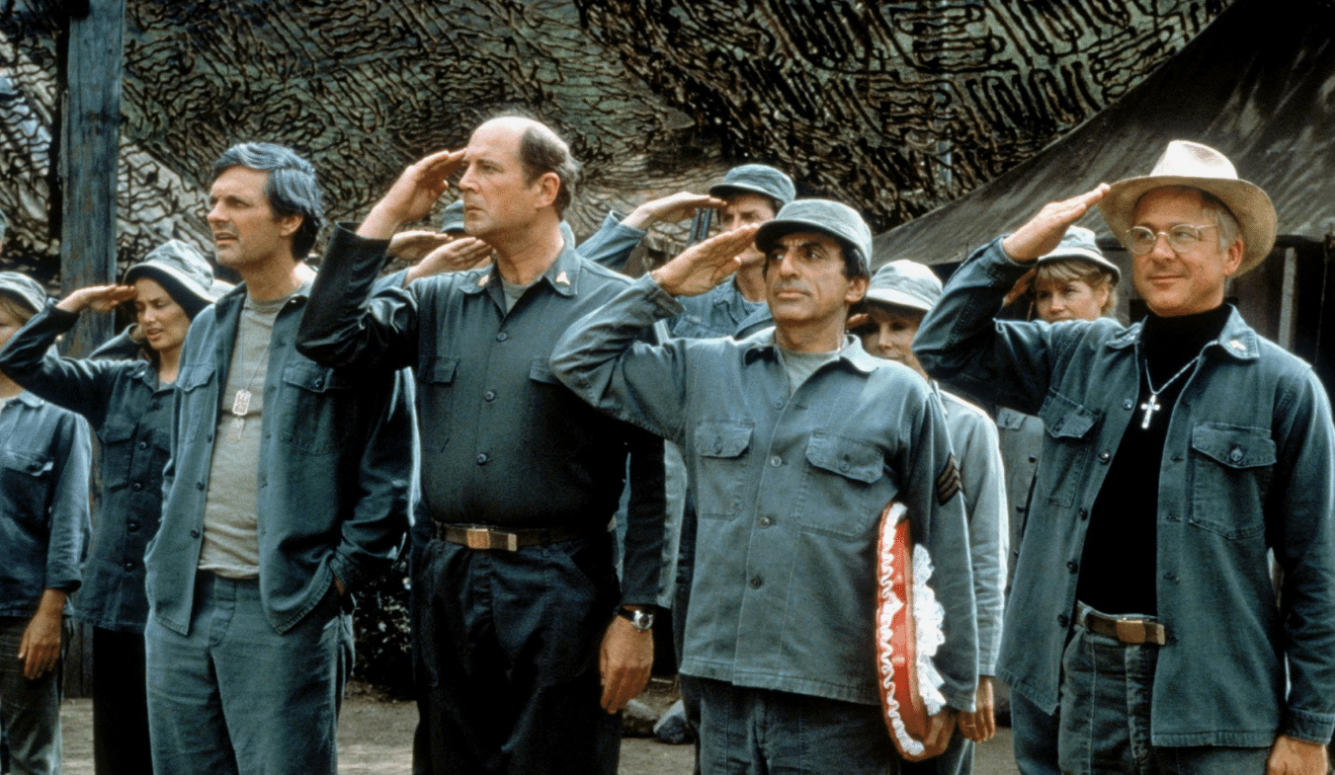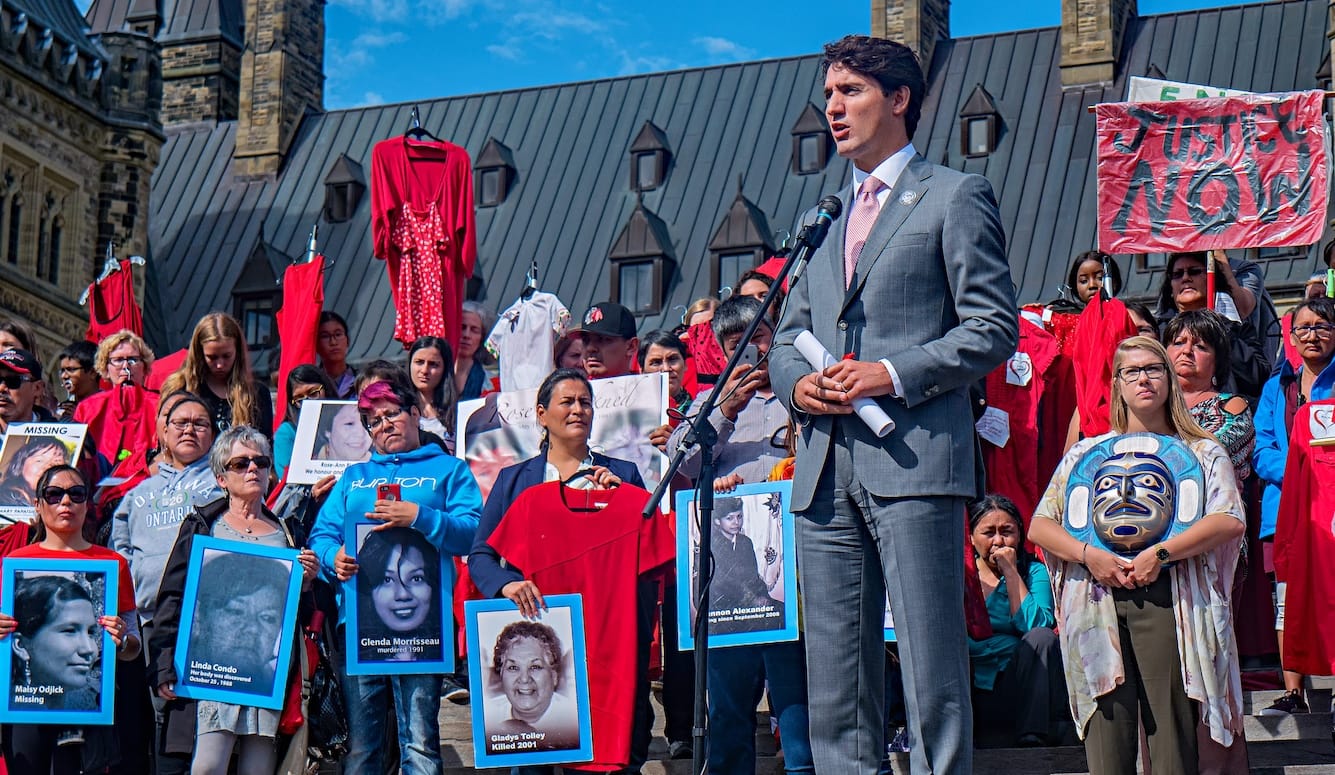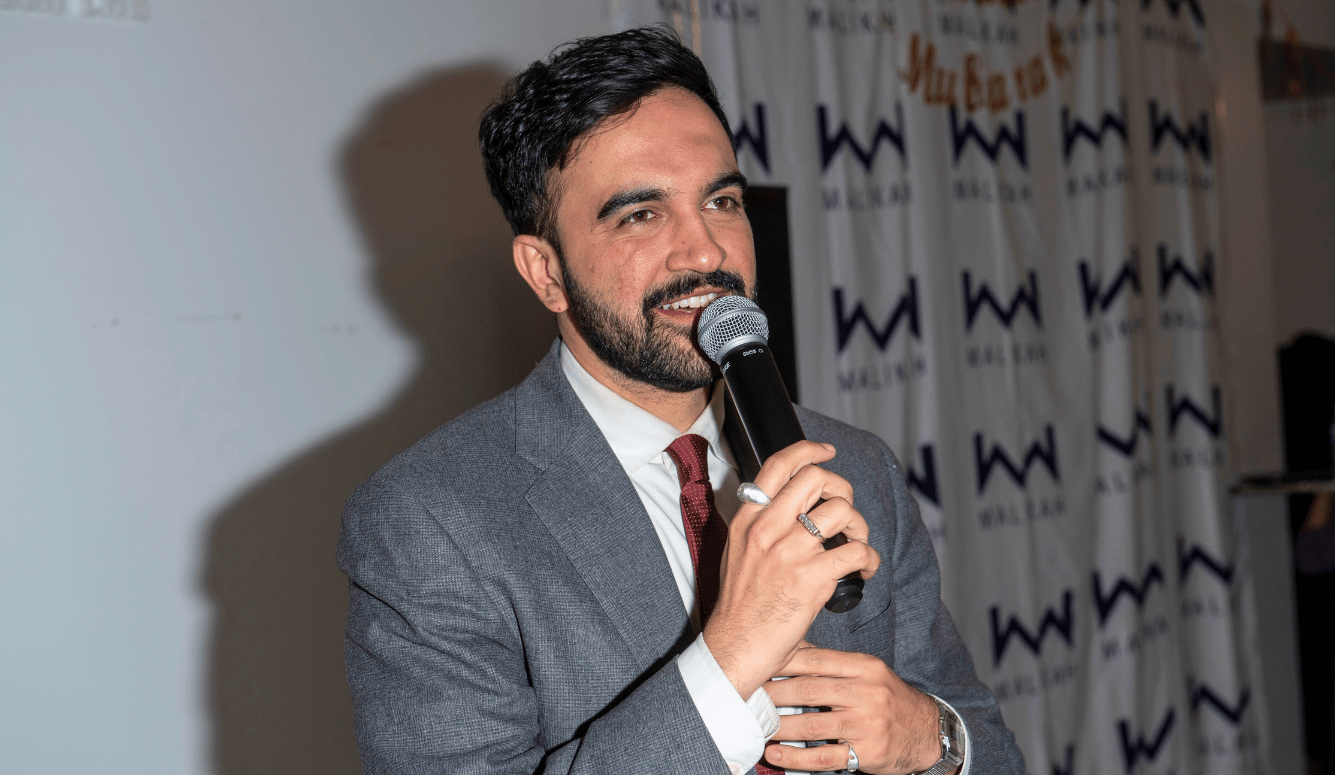Arts and Culture
The Real Star of M*A*S*H
A personal tribute to the overlooked genius of writer W.C. Heinz.

September 17th marked the 50th anniversary of the first episode of the hugely popular TV series, M*A*S*H, which ran for 11 seasons after its maiden episode aired in 1972. This milestone duly produced a flurry of tributes and media commentary, but the series was only one part of an entire franchise of entertainment properties—books, a film, two further TV spin-offs, board games, playing cards, trading cards, puzzle kits, and even a theatrical play.
The franchise itself dates to October 15th, 1968, when the original novel was published under the pseudonym, “Richard Hooker.” Its true authors were H. Richard Hornberger and W.C. Heinz, and according to some sources, the original title of the book was MASH: A Novel About Three Army Doctors. That’s how the book is listed on Wikipedia, but it’s not clear if it was originally intended to carry a subtitle. The acronym MASH (which stands for Mobile Army Surgical Hospital) wasn’t widely known in 1968, and William Morrow, which published the original hardback edition, may have decided to let people know that this was a war novel, a genre that was still wildly commercial at the time.
The story concerns the 4077th American MASH unit, situated about 45 miles north of Seoul, Korea, and begins in 1951. The horrors of war are leavened by the irreverent gallows humor the doctors use to help them cope with the human misery they encounter in the operating rooms. The Kirkus review noted that it “succeeds in maintaining that delicate balance between stethoscopic trauma and recuperative antics.” Only marginally successful in hardback, the book was subsequently the basis of a 1970 Robert Altman film starring Donald Sutherland, Elliott Gould, Tom Skerrit, and Robert Duvall that rapidly became a financial juggernaut and a truly transformational piece of popular culture.

The movie made roughly $82 million worldwide on a budget of only $3 million, and was the third highest-grossing film of 1971, behind only Love Story and Airport, both of which were based on the bestselling novels of previous years (1970 and 1968, respectively). Three other major war films landed among the year’s 10 highest-grossing films—Patton, Catch-22, and Tora! Tora! Tora!—but none of them earned as much as M*A*S*H, despite the fact that their combined production budgets ran to $56 million.
M*A*S*H got a fairly slow rollout in American theaters—released in January 1970, it didn’t top the American box office until September. At the 43rd annual Academy Awards ceremony held in April 1971, M*A*S*H was nominated for five Oscars, including Best Director and Best Picture (both of which went to Patton, a more conventional war film). In the end, Ring Lardner Jr., who had been blacklisted and jailed during the McCarthy era, won the film’s only Oscar for Best Adapted Screenplay. The film also picked up a Golden Globe Award for Best Musical or Comedy, and the coveted Palme D'Or at the 1970 Cannes Film Festival.
Most of the reviews were rapturous—even the New Yorker’s Pauline Kael, hardly known for gushing like a fangirl, was moved to enthuse, “I don’t know when I’ve had such a good time at a movie.” It was also the first major studio release to employ the word “fuck” in its dialog. In a rare negative review of the film, the New York Times’ Roger Greenspun complained that M*A*S*H was “the first major American movie openly to ridicule belief in God—not phony belief; real belief. It is also one of the few (though by no means the first) American screen comedies openly to admit the cruelty of its humor. And it is at pains to blend that humor with more operating room gore than I have ever seen in any movie from any place.”
Although it was set in the Korean war, M*A*S*H was clearly intended as a commentary on the conflict in Vietnam, which was by then approaching its bloody height. Along with previous countercultural landmarks like The Graduate, Bonnie and Clyde, and The Wild Bunch, M*A*S*H helped to persuade studios and filmmakers that they no longer needed to be afraid to tackle controversial subjects in a graphic and profane fashion. American movies became more direct, more in-your-face, and more anti-authoritarian than ever before. The gleeful irreverence of Altman and his peers had shown that studios could make a pile of money by attacking sacred cows such as the Pentagon, prayer, and patriotism.
So, first came a moderately successful novel. Next came an enormously successful film. And then, in September of 1972, a TV series arrived that would make history. After 11 seasons, the final episode of M*A*S*H, aired on February 28th, 1983, remains the most watched season finale in TV history and the most watched single episode of any scripted TV series ever. Of the 240 million people who lived in the US at the time, roughly 121 million of them watched at least part of the M*A*S*H finale—and this was before widespread home-ownership of VCRs, let alone access to online streaming services. About 106 million people (the estimated number who watched the entire broadcast) actually had to arrange to be at home and in front of their televisions for two and a half hours on a Monday night in the dead of winter. Storms knocked out the power in the San Francisco area, so that many residents were unable to watch the show—KPIX, the local CBS affiliate, was forced to rerun the episode three weeks later.
The show was showered with accolades and awards. Members of the Writers Guild of America voted it the fifth best-written TV series in history. The leader of Mensa International has proclaimed it the smartest TV show ever made. TV Guide has ranked it the eighth greatest TV show of all time and Rolling Stone ranked it the 16th. Over its 11-season run, it was nominated for 109 Emmy Awards and won 14 of them. It was also nominated for 22 Golden Globe Awards and won eight of those. The show produced two sequels, one of which was successful and one of which was a disappointment. Trapper John, M.D. ran for seven seasons (1979–86) and a total of 151 episodes. AfterMASH lasted only a season and a half and produced just 31 episodes.
So, who was most responsible for the success of the entertainment franchise commonly referred to as M*A*S*H? Was it Robert Altman who directed the hit 1970 film? Was it Larry Gelbart, who developed the TV series? Was it Alan Alda, who not only starred in the entire 11-year run of the series but also wrote 18 episodes and directed 32? I’d like to make an argument in favor of W.C. Heinz, who was one-half of the writing team behind the Richard Hooker pseudonym on the cover of the original novel.
Wilfred Charles Heinz was born in Mount Vernon, New York, in 1915. He graduated in 1937 from Middlebury College, one of the top liberal arts schools in the country, often referred to as one of the “Little Ivies,” a group of elite universities in the north-east considered nearly the equal of Harvard and Yale. During World War Two, Heinz was a European war correspondent for the New York Sun, and met Ernest Hemingway while the two men were covering the Battle of the Hurtgen Forest for their respective employers (the latter was freelancing for Collier’s magazine at the time). Hemingway had taken over a house near the forest and Heinz slept on a cot in the attic, occasionally sharing a drink and a story with his literary idol.
After the war, Heinz’s journalism focused mainly on sports, and he would eventually come to be regarded as one of America’s all-time greatest sports writers. He won numerous awards for his reporting and was inducted into several sports-writing halls of fame. When he died in 2008, the New York Times’ obituary noted:
David Halberstam, in the forward to “What a Time It Was” (2001), a collection of Mr. Heinz’s sports articles, wrote that along with Red Smith, “he was a leader in what was about to become a journalistic revolution.” He continued, “He wrote simply and well—if anything, he underwrote—but he gave his readers a feel and a sense of what was happening at a game or at the fights, and a rare glimpse into the personalities of the signature athletes of the age.”
Heinz’s July 29th, 1949, column for the Sun, “Death of a Racehorse,” is widely regarded as one of the best short pieces of sports-writing of all time, and appears in numerous anthologies. (It also demonstrates the influence of Hemingway on his prose.)
But Heinz was more than a sportswriter. By the late 1950s, he had earned enough money to take a break from the sports beat and decided to fulfill his dream of writing a novel. In nine months, he cranked out a boxing story called The Professional, subsequently published by Harper & Brothers in January 1958. Famed New York City restaurateur Toots Shor sent a copy to Hemingway in Cuba, unaware that Hemingway and Heinz were acquainted. Hemingway cabled a message to Harper’s that read: “The Professional is the only good novel about a fighter I’ve ever read and an excellent novel in its own right.” When Heinz wrote back to Hemingway to thank him for the cable, he mentioned that it had helped soften the blow of a sneering (and anonymous) review in the pages of Time magazine. “What I cabled,” Hemingway replied, “was straight, and you believe it. Critics, mostly, don’t know much about it. They can’t tell the players without a scorecard.”
In October 1958, Heinz received a letter of praise from another writer, a young and (at the time) largely unknown author of Western fiction named Elmore Leonard. Heinz wrote back immediately to tell the 33-year-old Leonard, “You are only the second person, outside my circle of friends and acquaintances, who has felt impelled to comment to me or the publisher about The Professional. The first was Ernest Hemingway, who cabled his compliments to Harper’s about six days after the book came out. You are a writer, however, and understand, as does, of course, Papa, and that is what gives your letter added importance to me.”
Despite receiving good reviews in publications like Newsweek and the Saturday Review, The Professional didn’t cause much of a stir at the time. But today, if you search the Internet for the best novels about boxing, Heinz’s book is likely to sit near the top of most lists. When the book was republished by Da Capo Press in 2001, Leonard provided the introduction. Of his early years as a writer, he recalled: “Studying Hemingway I felt I was getting close to the style I wanted to develop. I began reading The Professional and there it was on every page. … Over the years I’ve spoken endlessly of Hemingway being a major influence, failing to mention W.C. Heinz as the all-important link, the next step. It has taken a rereading of The Professional for me to see clearly where I came from.”
In the early 1960s, Heinz spent some time shadowing a prominent surgeon named J. Maxwell Chamberlain, who specialized in thoracic medicine (basically, chest surgery). His proximate goal was to write a cover story for Life magazine about contemporary surgical procedures (which he did), but he ended up accruing so much material that he decided to write a nonfiction book. He interviewed several other chest surgeons but none of them wished to be the subject of a book, and so Heinz decided to write another novel instead, combining the real surgeons he had interviewed into a single fictional character. The resulting book, The Surgeon, was published in 1963. Kirkus Reviews, which had been unimpressed by The Professional, now raved about Heinz’s new book:
A composite portrait in semi-fictional form of a surgeon of today, this carries terrific impact, an undeviating sense of authenticity and an almost morbid fascination for the lay reader. For the medical student—probably even for the practicing doctor or surgeon—it might serve as a soundtrack for successive observation visits to the operating theatre where a specialist in chest surgery is performing an intricate, perhaps even a history-making operation.
The Surgeon is absolutely gripping. The story unspools over the course of single day in the life of thoracic surgeon Matthew Carter (although flashbacks provide us with additional details about his life), during which he performs a relatively minor piece of surgery and then a second, hours-long procedure that reads like an epic battle scene. Even though much of the medical terminology is largely foreign to me, I’ve read it several times, usually in a sitting or two.
The book was well reviewed, but it had two things working against it. First, it was published in 1963, about nine months before the assassination of President Kennedy. Book rollouts took longer in the pre-Internet age, and The Surgeon was still finding its commercial feet when the assassination occurred on November 22nd. For weeks, even months, after that event, newspapers, TV programs, and magazines were filled with the depressing details of the massive brain injury sustained by the president. This probably dimmed reader enthusiasm for a novel filled with graphic medical detail.
The second problem was that the book was one of the first popular novels to emphasize the connection between smoking and lung cancer. In 1963, Americans smoked 523 billion cigarettes—more than they ever had before or ever would again. The Surgeon didn’t exactly bomb at the bookstores, but it never became the bestseller it probably deserved to be. Neither reviewers nor book-buyers were able to figure out if it was a novel or nonfiction. In an author’s note, Heinz only added to the confusion. It begins: “This book, which the publisher has decided to call a novel, was not intended to be a fictional portrayal of a surgeon of our time.”
Perhaps because of the underwhelming response it received, Heinz decided to return to sports writing. He “co-wrote” a book with legendary NFL head coach Vince Lombardi called Run to Daylight! (he was more likely the ghostwriter, although he was credited, in much smaller print than Lombardi, on the book’s cover). He was in Miami Beach in February of 1964 to cover the title fight between Cassius Clay (later Muhammad Ali) and Sonny Liston when he got word from his wife, Betty, that his 16-year-old daughter, Barbara, had fallen seriously ill from an infection. He rushed back to his home in New York City, but Barbara died shortly thereafter. Despondent, Heinz, Betty, and their daughter Gayl, moved to Dorset, Vermont, about 30 miles from Bennington, where Heinz and Betty had first met. After that, Heinz pretty much gave up sports writing and became more of a homebody, seeking out projects he could work on from home.
In 1967, an American surgeon and would-be author named Hiester Richard Hornberger, Jr. found himself growing frustrated. He had served as a surgeon in a MASH unit during the Korean War, and in 1956, had begun writing a novel based on the experience. Alas, 11 years later, he still hadn’t found a publisher willing to accept the manuscript. In desperation, Hornberger wrote to one of his old medical school professors, a surgeon by the name of J. Maxwell Chamberlain. According to Heinz, Hornberger’s letter said, “That clown who wrote your book might be interested that I have a book I put together from my experiences in Korea.”
Dr. Chamberlain passed the novel on to Heinz. Heinz gave it to Betty to read and she liked it. What’s more, she found it very funny. While there are a few humorous touches in The Professional and The Surgeon, neither book is exactly a laugh riot. Still mourning the death of his daughter, Heinz might have been attracted by the idea of working on a comic novel (although M*A*S*H contains its share of war’s horrors). And so, he agreed to help whip Hornberger’s novel into shape. According to Heinz, the co-writing process “took quite a while, maybe a year, back and forth. I eventually tied everything together. As much as it got tied together; there isn’t a hell of a story line in MASH, just a succession of operations and techniques and humor. The only thing that holds it together is the characters and the familiarity that the reader comes to have with them.”
I can’t say just exactly how much of the novel is Hornberger and how much is Heinz. But I tend to believe that most of what makes the novel so readable is Heinz’s work. Prior to M*A*S*H, he had written two very good novels, one of which impressed Ernest Hemingway and had a profound effect on the work of Elmore Leonard. And by the time he got around to working on M*A*S*H, he had already established himself as perhaps the country’s greatest sportswriter. Hornberger, on the other hand, had published nothing prior to M*A*S*H. Afterwards, he would publish only two more books, both of them sequels, M*A*S*H Goes To Maine (1971) and M*A*S*H Mania (1977), neither of which rises to anywhere near the level of the original (although M*A*S*H Goes To Maine is mildly amusing, especially if, like me, you were a superfan of the TV series back in the 1970s).
The name Richard Hooker appears on a dozen other M*A*S*H sequels (M*A*S*H Goes to…New Orleans, ...Paris, ...London, ...Morocco, etc.) but, reportedly, it was the co-author of those books, William E. Butterworth, who wrote them in their entirety (Butterworth, a Korean War veteran, was better known by his pseudonym W.E.B. Griffin, under which he wrote nearly 60 novels, mostly dealing with military matters). It strikes me as likely that M*A*S*H would never have been published had it not been for the intervention of W.C. Heinz. Which is why I believe that, more than Robert Altman or Larry Gelbart or Alan Alda or even H. Richard Hornberger, W.C. Heinz is the real star of the MCU (M*A*S*H Cinematic Universe). None of it would have been possible had Heinz not lent his considerable writing skills to Hornberger’s unpublishable novel.
Heinz and his family used some of their wealth to establish the Barbara Bailey Heinz and Gayl Bailey Heinz Fund, which supports the Department of Pediatrics at the University of Vermont College of Medicine near where they lived in Dorset. The university’s website once contained a brief bio of Heinz, which noted the irony of the fact that his two bestselling books don’t carry his name on the covers (his name actually does appear on the cover of Run to Daylight, but in tiny print).
In a just world, The Professional and The Surgeon would both be part of the American literary canon by now. In this one, it appears that M*A*S*H is likely to be Heinz’s most lasting legacy, and an anonymous one, at that. September 17th, 2022, brought us a lot of stories about the birth of the classic TV series. October 15th isn’t likely to bring many stories about the 54th birthday of the novel. But kindly spare a thought for the literary midwife who made it all possible.





